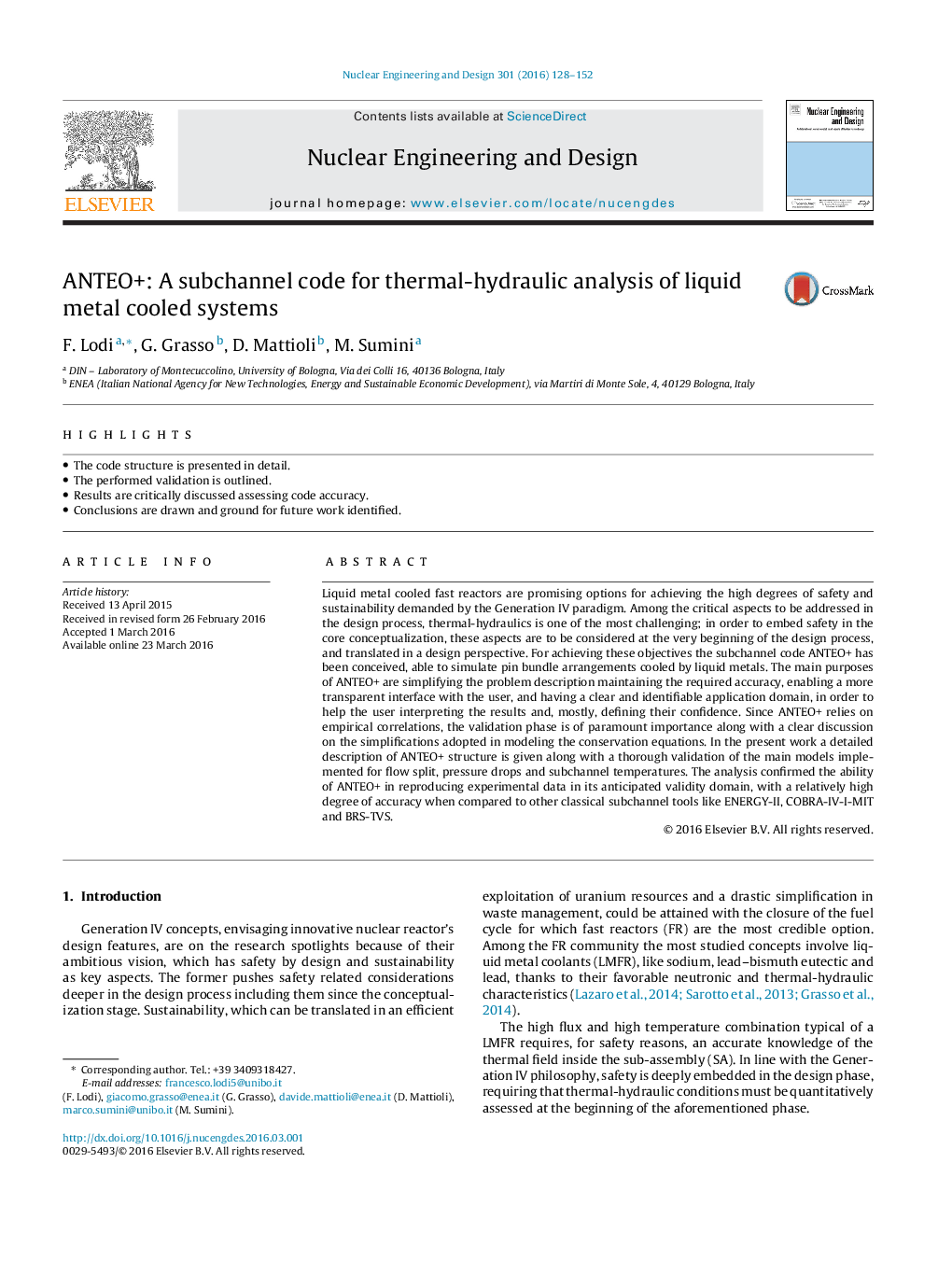| Article ID | Journal | Published Year | Pages | File Type |
|---|---|---|---|---|
| 295954 | Nuclear Engineering and Design | 2016 | 25 Pages |
•The code structure is presented in detail.•The performed validation is outlined.•Results are critically discussed assessing code accuracy.•Conclusions are drawn and ground for future work identified.
Liquid metal cooled fast reactors are promising options for achieving the high degrees of safety and sustainability demanded by the Generation IV paradigm. Among the critical aspects to be addressed in the design process, thermal-hydraulics is one of the most challenging; in order to embed safety in the core conceptualization, these aspects are to be considered at the very beginning of the design process, and translated in a design perspective. For achieving these objectives the subchannel code ANTEO+ has been conceived, able to simulate pin bundle arrangements cooled by liquid metals. The main purposes of ANTEO+ are simplifying the problem description maintaining the required accuracy, enabling a more transparent interface with the user, and having a clear and identifiable application domain, in order to help the user interpreting the results and, mostly, defining their confidence. Since ANTEO+ relies on empirical correlations, the validation phase is of paramount importance along with a clear discussion on the simplifications adopted in modeling the conservation equations. In the present work a detailed description of ANTEO+ structure is given along with a thorough validation of the main models implemented for flow split, pressure drops and subchannel temperatures. The analysis confirmed the ability of ANTEO+ in reproducing experimental data in its anticipated validity domain, with a relatively high degree of accuracy when compared to other classical subchannel tools like ENERGY-II, COBRA-IV-I-MIT and BRS-TVS.
